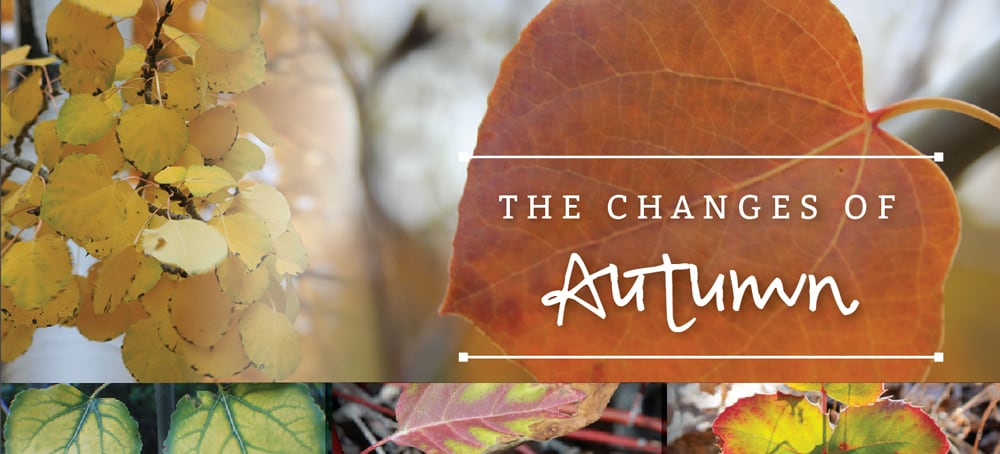Contributed by Lois K. Ports for Bristlecone Audubon Chapter

Autumn leaf color is a process that affects the normally green leaves of many deciduous trees and shrubs turning them various shades of red, yellow, purple, orange, and brown.
During the spring and summer the leaves have served to help produce most of the foods necessary for the tree’s growth. Photosynthesis takes place in the leaf in numerous cells containing chlorophyll, which gives the leaf its green color. Chlorophyll absorbs from sunlight the energy that is used to transform carbon dioxide and water to carbohydrates, such as sugars and starch. Chlorophyll normally masks the yellow pigments known as xanthophylls and the orange pigments called carotenoids. But in the fall, because of changes in the length of daylight and changes in temperature, the leaves stop their food-making process. The chlorophyll breaks down and the green color disappears and the yellow to orange colors become visible in trees such as cottonwoods and aspens.
At the same time other chemical changes may occur, which form additional colors through the development of red anthocyanin pigments. Some mixtures give rise to the reddish and purplish fall colors of trees such as dogwoods and chokecherry. All these colors are due to the mixing of various amounts of the residual chlorophyll and other pigment in the leaf during the fall season.
Temperature, light, and water supply have an influence on the degree and the duration of fall color. Low temperatures above freezing will favor anthocyanin formation producing bright reds in some shrubs. However, early frost will weaken the brilliant red color. Rainy and/or overcast days tend to increase the intensity of fall colors.
Deciduous trees must have some sort of protection to survive freezing temperatures and other harsh wintertime influences. Stems, twigs, and buds can survive extreme cold. Tender leaf tissues would freeze in winter so these plants must dispose of them. In response to the shortening days and declining intensity of sunlight, leaves begin the processes leading up to their fall. The veins that carry fluids into and out of the leaf gradually close off as a layer of cells forms at the base of each leaf. These clogged veins trap sugars in the leaf and promote production of anthocyanins. Once this separation layer is complete and the connecting tissues are sealed off.
If you are interested in learning more about both the flora and fauna of our area, you can send an email to BristleconeAudubon@gmail.com to be put on our newsletter mailing list or find us on Facebook under Bristlecone Audubon Chapter.